Question
I recently picked up some walnut (and other species) crotches and a cherry swell (not sure if it is considered a burl). I've Anchorsealed the ends and won't be cutting for a couple more months.
These are a first for me, but I've access to many more. I'm fairly confident the cutting of the crotch material is best done in the flat position with the centers/hearts leveled to each other, parallel to the blade. I'll be air drying, and I've read slow drying is key. I read Tyvek is being used to slow the curing without the mold issues.
The cherry swell (not knotty/burly like most pictures) has lumps and is at one end of a 6' log, but doesn't appear to be a base grown on a bank. I didn't fell the trees. I'd appreciate input on cutting techniques for both styles, drying and average cut thickness. I do understand thickness has to do with end product, but I don't know what that will be. I'd build table tops or book match if I keep it. I'll be cutting on a 36" bandmill.
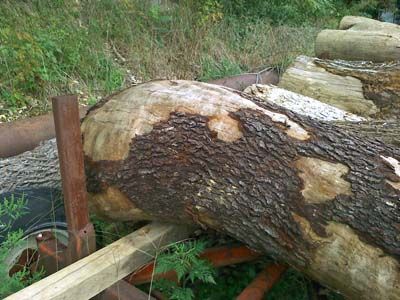
Walnut crotch.
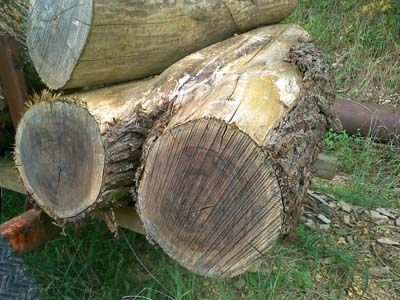
Forum Responses
(Sawing and Drying Forum)
From contributor D:
You have the direction of cut figured out, flat. I mill my crotches 6/4 mostly. That is just because I have found they sell/I use them for table top slabs. Not saying others won't give advice on another market/use that calls for a different thickness. I have milled many crotches and found anything 4/4 and under wants to cup, making the thickness sanded/flat piece too thin for my needs. The nicest feather is just going to be in the center, maybe 3-5 flitches depending on the size of the crotch.
Drying is a double edged sword. I mentioned cupping. A guy tends to want to really weigh wood down to keep it from cupping, then sometimes they tear themselves apart in the weighted stack. It depends on how much internal stress each individual crotch was under when the tree stood.
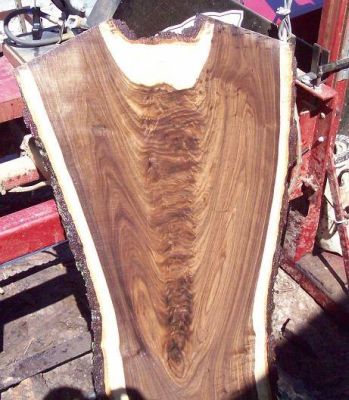
The wider the fork is in a crotch, the less likely it is to have included bark. The narrower the crotch, the more likely it is to have included bark. Just imagine the narrow vs. wide patterns in tree form and the tree putting on a growth ring every year. Narrow formations will tend to collide at some point, and as they do, the area will flatten out and become pressed together, and the growth there will become very slow, except the outer edges. Over many years, the outer edges should become solid and fuse together, but this will never really exhibit any figured grain patterns
On the other hand, wide crotches can be problematic. If they are too wide, the feathering crotch grain within will be very short, and barely worth harvesting. Every tree is different - you have to know how to read the log just by looking at it, which takes time and practice.
The ideal crotch pieces come from large trees that formed half way between too wide and too narrow, where the bark right at the top of the crotch continually grows up in height. When the trunks above the crotch are equal in diameter, this is a very good indicator that the grain will be nice and balanced within the log, but if one side of the tree above the crotch is smaller, it should still yield beautiful wood as long as it's not bark included. Sometimes, but rarely, narrow crotches will stay solid and not include. This rarity which I sometimes find in cherry will become very long, but the feathering grain is unusually narrow, which can give a very nice appearance, and be nice for bookmatched period furniture doors.
Another common problem with crotch wood is that they can look like they formed well, and upon visual inspection have all the ideal details I mentioned above, but have unforeseen bark inclusions within. This is most common in narrow crotch grains. When sawing these, set your expectations low, and see it as a learning experience. I do not know how the cherry log will come out, but the walnut one appears to run very deep, to the point where if you need to yield something from it, I would saw the opposite method - 90 degrees against the width of the crotch for plainsawn.
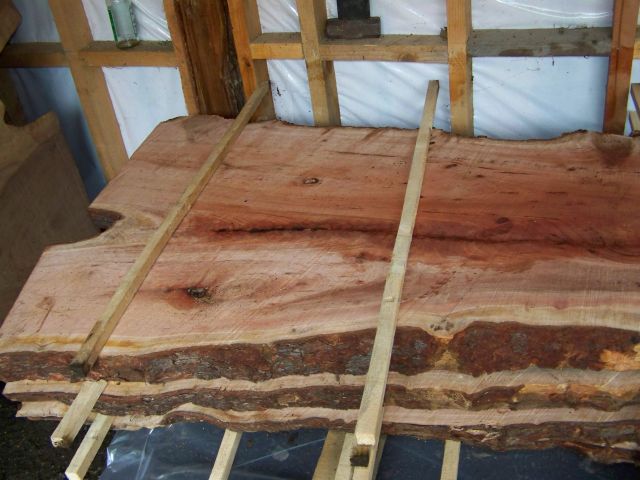
Here is an example of the gamble paying off! A perfectly formed feather crotch, nearly 4' long in some of the boards from this tree's slab set.
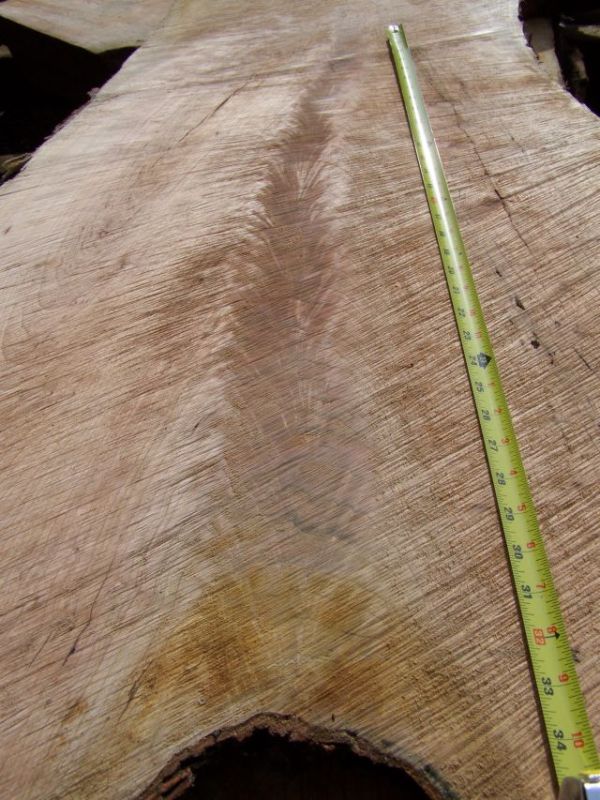
The cherry is a swell (?), not the knotty burls. Any guesses of figuration type? I know I'll probably plain saw it lying on its side, and it curves to one side at the swell.